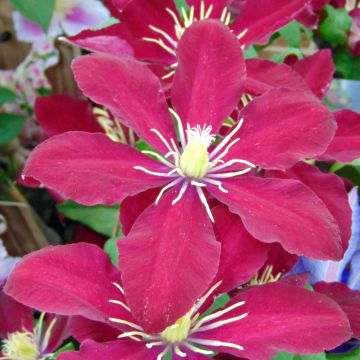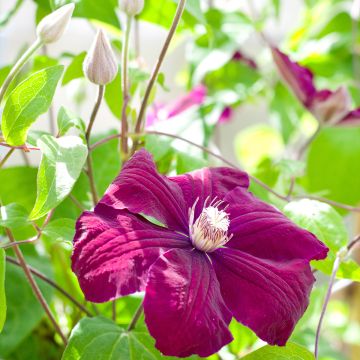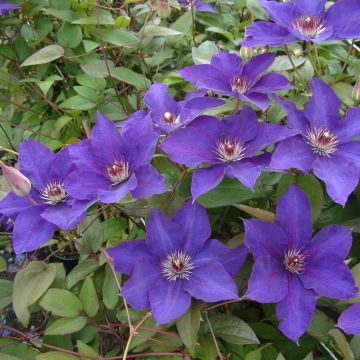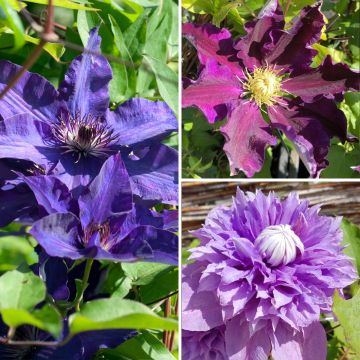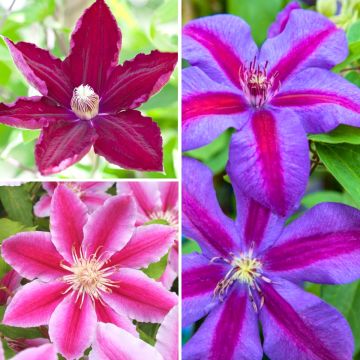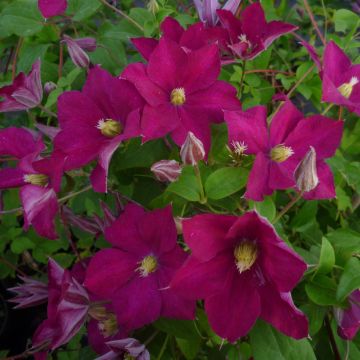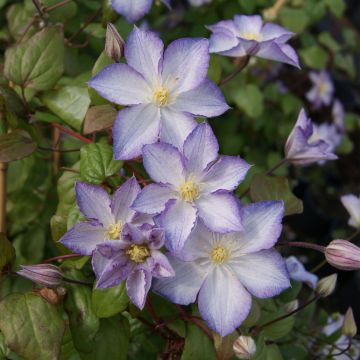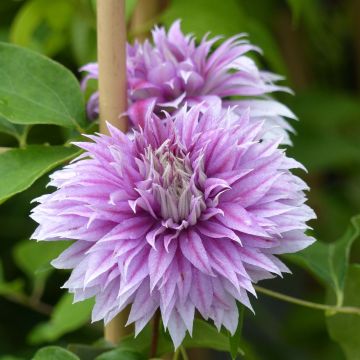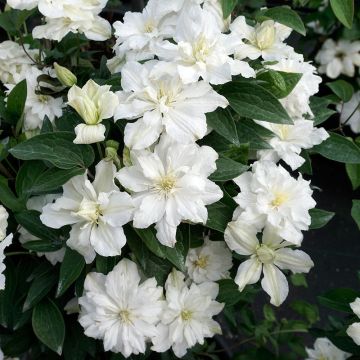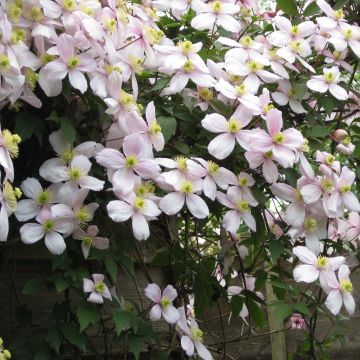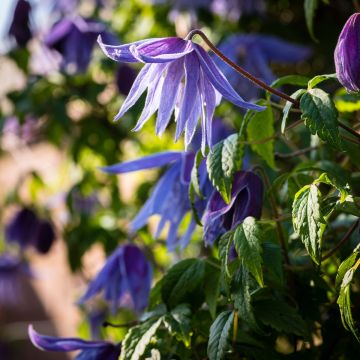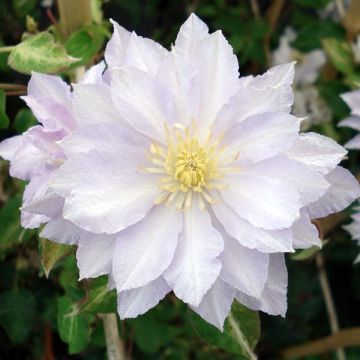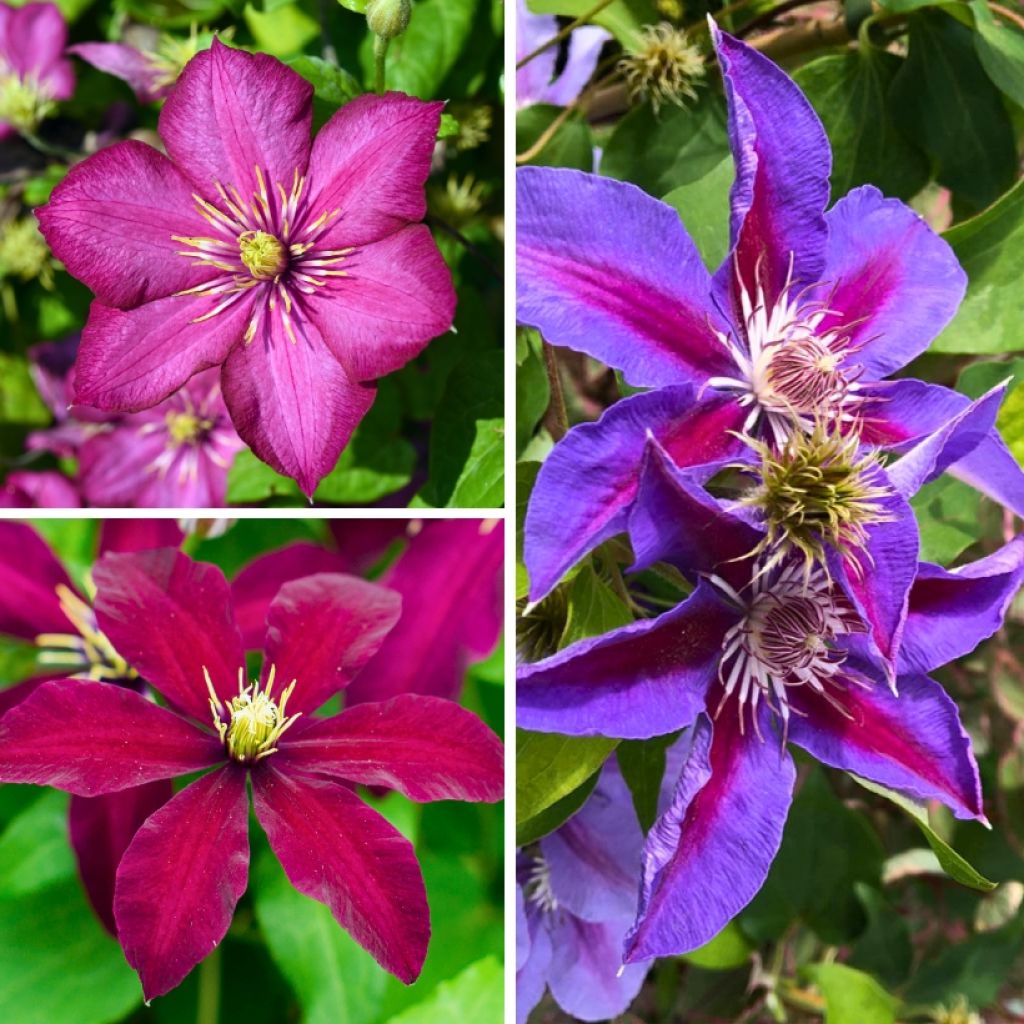

Clematis Three Sisters trio


Clematis Three Sisters trio
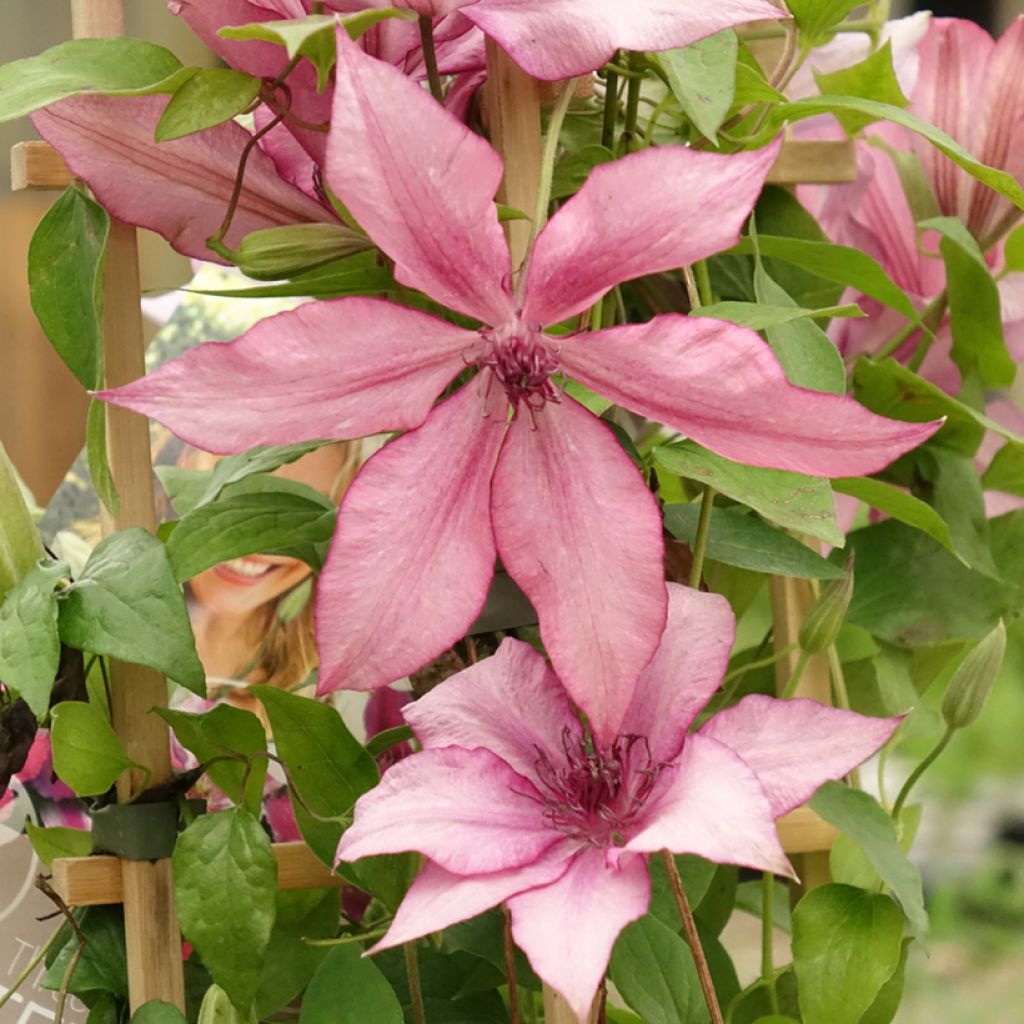

Clematis Three Sisters trio
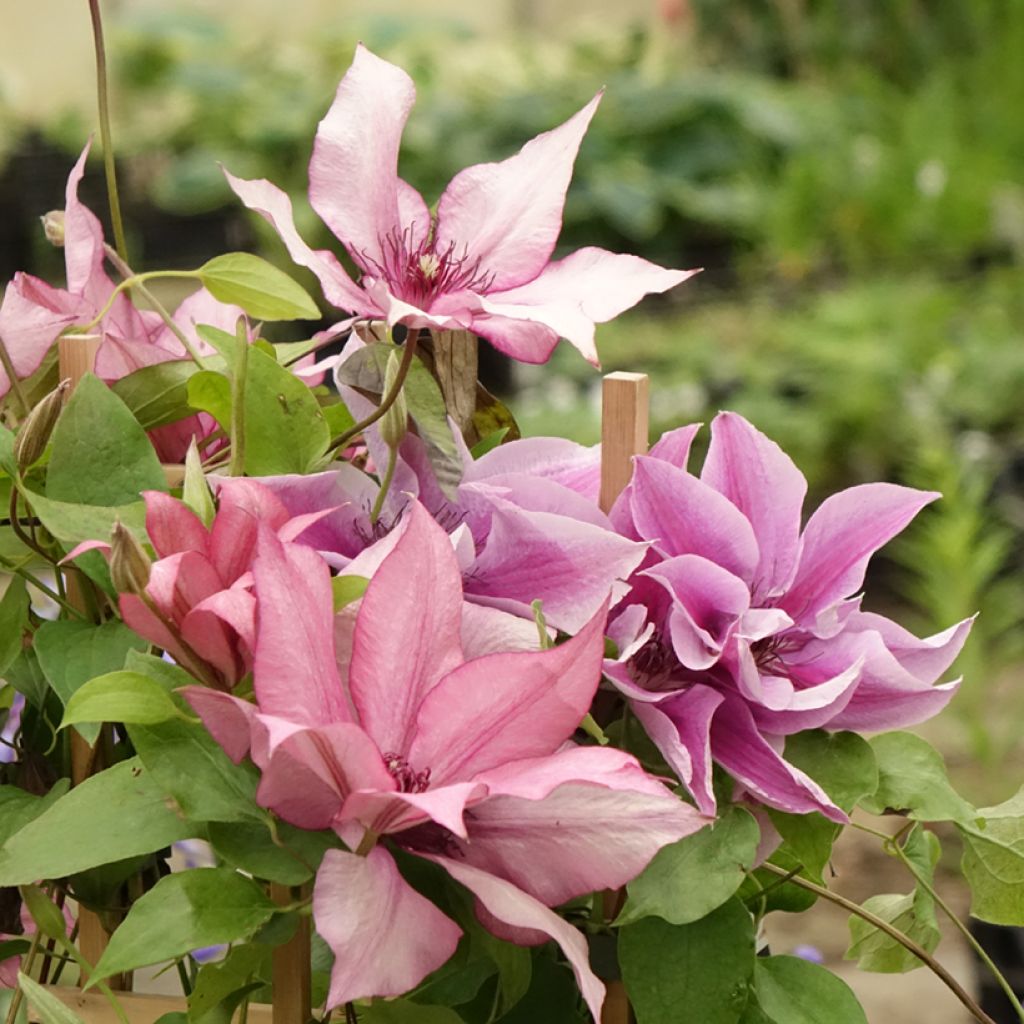

Clematis Three Sisters trio
Clematis Three Sisters trio
Clematis Mix
Clematis, Traveller's Joy, Old Man's Beard, Leather Flower
Special offer!
Receive a €20 voucher for any order over €90 (excluding delivery costs, credit notes, and plastic-free options)!
1- Add your favorite plants to your cart.
2- Once you have reached €90, confirm your order (you can even choose the delivery date!).
3- As soon as your order is shipped, you will receive an email containing your voucher code, valid for 3 months (90 days).
Your voucher is unique and can only be used once, for any order with a minimum value of €20, excluding delivery costs.
Can be combined with other current offers, non-divisible and non-refundable.
Home or relay delivery (depending on size and destination)
Schedule delivery date,
and select date in basket
This plant carries a 6 months recovery warranty
More information
We guarantee the quality of our plants for a full growing cycle, and will replace at our expense any plant that fails to recover under normal climatic and planting conditions.
Would this plant suit my garden?
Set up your Plantfit profile →
Description
Clematis Three Sisters trio is a collection of three large-flowered clematis with complementary and vibrant colours. Bright red is combined with mauve, purple and carmine to offer a dazzling spectacle from June until the first frost! These repeat-flowering blooms succeed and overlap throughout the entire summer season, beautifully enhancing a terrace or even a balcony. It is also possible to plant this composition in the ground, at the base of a fence or pergola, to enjoy it in the garden.
Clematis belong to the large family of Ranunculaceae, which includes about 2500 species distributed among around sixty genera, often prized in the garden for their flowering, like Anemones, Ranunculus, Trollius, and Columbines... The group of Clematis itself is very diverse, with nearly 300 species, bringing together herbaceous perennials as well as deciduous or evergreen climbers from all over the world, Europe, the Himalayas, China, Australia, North and Central America. It can be difficult to choose from the many horticultural varieties, as they are all beautiful.
Three Sisters trio simplifies the choice by offering a beautiful combination in warm tones. This winning trio follows the path of varietal creation, with a historic variety, 'Ville de Lyon', obtained in 1899, 'Étoile de Malicorne' in 1968, and 'Alita' from the Garland range in 2012. These three varieties all have medium growth, about 3m in height, a little more for the first one, and warm colours.
Ville de Lyon produces bright carmine red flowers, enhanced by a yellow stamen centre, creating an irresistible contrast. The corollas, with a diameter of 10 to 13 cm, are simple and composed of relatively wide petals with rounded tips. The flowering is abundant and long-lasting, spreading from June to September. It is the most vigorous of the three, reaching a height of up to 4m when planted in isolation, with a width of 2.5m.
Étoile de Malicorne is more compact but compensates with the size of its large flowers, which measure up to 15 cm in diameter. They are star-shaped and almost bicolour, with long, intense mauve petals marked by a central purple vein. The large corollas have a cream-white stamen centre, which stands out well against the petals. This variety blooms for the first time in June, then again in September.
The third variety Alita, which is also the most recent, is part of the Garland range of clematis that can be grown indoors in winter and then moved outdoors for a flowering period that extends from early summer until the first frost. The flowers are similar to the previous variety in terms of shape and size and a particularly vibrant red.
The blooms are followed by decorative silvery-grey feathery seed heads that persist until winter. The smooth leaves are divided into three elliptical to lanceolate dark green leaflets. These clematis cling to their support with petioles transformed into tendrils.
This original composition with flamboyant colours will enliven a terrace throughout the entire summer season. To combine ornamental and edible aspects, opt for a dwarf fruit tree that will allow you to enjoy your own harvest. Cherry, Peach, Pear, or Plum trees will also provide you with their spring flowering, admittedly less splendid than that of your Clematis, but which will further extend the flowering period. Also, consider sowing herbs in containers, some like purple basil are also ornamental, and all of them will be useful for flavouring your dishes. And if you want to add a touch of Mediterranean style to your living space, add some perennials like Euryops chrysanthemoides, which will give you a superb flowering pot, literally covered with yellow flowers for half of the year, and which you can overwinter in a cool room.
Tips : Avoid excessive fertilisation, which stimulates foliage growth at the expense of flowers. Do not mulch to avoid excessive moisture, which can cause clematis wilt.
Report an error about the product description
Clematis Three Sisters trio in pictures


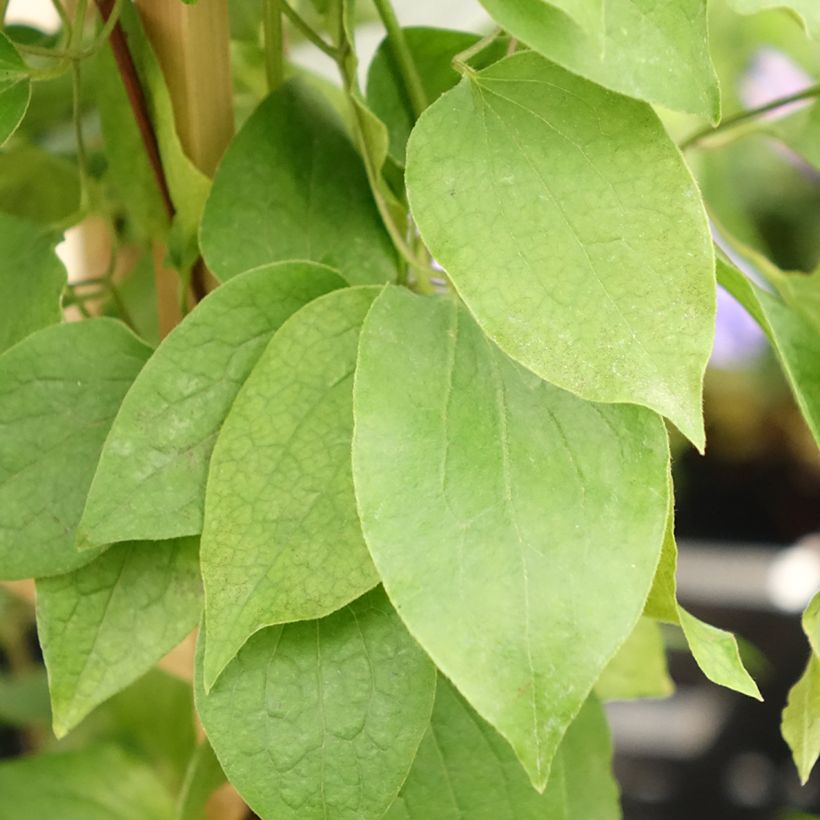

Plant habit
Flowering
Foliage
Botanical data
Clematis
Mix
Ranunculaceae
Clematis, Traveller's Joy, Old Man's Beard, Leather Flower
Cultivar or hybrid
Other Clematis Jackmanii
View all →Planting and care
The Clematis Three Sisters trio appreciates a sunny or lightly shaded location. If you keep them in their pot, make sure to water them regularly during the growing season, as these growing conditions are more drying than in open ground. However, do not water them in winter, natural rainfall will be sufficient. At the end of winter, remove any dry stems and prune to maintain a size suitable for the available space, especially on a balcony.
If you plant your pot in open ground, choose fertile, humus-bearing, well-drained soil, shading the roots and base of the stem (with a flat tile, for example). The saying for a beautiful clematis is "feet in the shade and head in the sun"... It is also good to remember that clematis wilts in overly wet soil. Plant them with the root ball at an angle, covering it with 3 cm of soil, in dug soil, lightened with good compost and coarse sand. After planting, cut back the clematis stems to about 30 cm from the base, above a healthy pair of buds. During the first few weeks, water regularly. However, be careful not to let the water stagnate, as this can cause a fungus to develop at the collar. Mulch all clematis in February with garden compost or well-rotted manure, avoiding direct contact with the stems. Train the stems, without crushing them, until the plant grips for itself. Clematis also like to grow freely on neighbouring plants. After a few years, cover the base of your climbing clematis with a small mound of soil, to reduce the risk of wilting while promoting the growth of vigorous new shoots from the crown. Slugs can attack clematis and devour the stems. Aphids and greenhouse whiteflies are also potential pests.
Planting period
Intended location
Care
This item has not been reviewed yet - be the first to leave a review about it.
Similar products
Haven't found what you were looking for?
Hardiness is the lowest winter temperature a plant can endure without suffering serious damage or even dying. However, hardiness is affected by location (a sheltered area, such as a patio), protection (winter cover) and soil type (hardiness is improved by well-drained soil).

Photo Sharing Terms & Conditions
In order to encourage gardeners to interact and share their experiences, Promesse de fleurs offers various media enabling content to be uploaded onto its Site - in particular via the ‘Photo sharing’ module.
The User agrees to refrain from:
- Posting any content that is illegal, prejudicial, insulting, racist, inciteful to hatred, revisionist, contrary to public decency, that infringes on privacy or on the privacy rights of third parties, in particular the publicity rights of persons and goods, intellectual property rights, or the right to privacy.
- Submitting content on behalf of a third party;
- Impersonate the identity of a third party and/or publish any personal information about a third party;
In general, the User undertakes to refrain from any unethical behaviour.
All Content (in particular text, comments, files, images, photos, videos, creative works, etc.), which may be subject to property or intellectual property rights, image or other private rights, shall remain the property of the User, subject to the limited rights granted by the terms of the licence granted by Promesse de fleurs as stated below. Users are at liberty to publish or not to publish such Content on the Site, notably via the ‘Photo Sharing’ facility, and accept that this Content shall be made public and freely accessible, notably on the Internet.
Users further acknowledge, undertake to have ,and guarantee that they hold all necessary rights and permissions to publish such material on the Site, in particular with regard to the legislation in force pertaining to any privacy, property, intellectual property, image, or contractual rights, or rights of any other nature. By publishing such Content on the Site, Users acknowledge accepting full liability as publishers of the Content within the meaning of the law, and grant Promesse de fleurs, free of charge, an inclusive, worldwide licence for the said Content for the entire duration of its publication, including all reproduction, representation, up/downloading, displaying, performing, transmission, and storage rights.
Users also grant permission for their name to be linked to the Content and accept that this link may not always be made available.
By engaging in posting material, Users consent to their Content becoming automatically accessible on the Internet, in particular on other sites and/or blogs and/or web pages of the Promesse de fleurs site, including in particular social pages and the Promesse de fleurs catalogue.
Users may secure the removal of entrusted content free of charge by issuing a simple request via our contact form.
The flowering period indicated on our website applies to countries and regions located in USDA zone 8 (France, the United Kingdom, Ireland, the Netherlands, etc.)
It will vary according to where you live:
- In zones 9 to 10 (Italy, Spain, Greece, etc.), flowering will occur about 2 to 4 weeks earlier.
- In zones 6 to 7 (Germany, Poland, Slovenia, and lower mountainous regions), flowering will be delayed by 2 to 3 weeks.
- In zone 5 (Central Europe, Scandinavia), blooming will be delayed by 3 to 5 weeks.
In temperate climates, pruning of spring-flowering shrubs (forsythia, spireas, etc.) should be done just after flowering.
Pruning of summer-flowering shrubs (Indian Lilac, Perovskia, etc.) can be done in winter or spring.
In cold regions as well as with frost-sensitive plants, avoid pruning too early when severe frosts may still occur.
The planting period indicated on our website applies to countries and regions located in USDA zone 8 (France, United Kingdom, Ireland, Netherlands).
It will vary according to where you live:
- In Mediterranean zones (Marseille, Madrid, Milan, etc.), autumn and winter are the best planting periods.
- In continental zones (Strasbourg, Munich, Vienna, etc.), delay planting by 2 to 3 weeks in spring and bring it forward by 2 to 4 weeks in autumn.
- In mountainous regions (the Alps, Pyrenees, Carpathians, etc.), it is best to plant in late spring (May-June) or late summer (August-September).
The harvesting period indicated on our website applies to countries and regions in USDA zone 8 (France, England, Ireland, the Netherlands).
In colder areas (Scandinavia, Poland, Austria...) fruit and vegetable harvests are likely to be delayed by 3-4 weeks.
In warmer areas (Italy, Spain, Greece, etc.), harvesting will probably take place earlier, depending on weather conditions.
The sowing periods indicated on our website apply to countries and regions within USDA Zone 8 (France, UK, Ireland, Netherlands).
In colder areas (Scandinavia, Poland, Austria...), delay any outdoor sowing by 3-4 weeks, or sow under glass.
In warmer climes (Italy, Spain, Greece, etc.), bring outdoor sowing forward by a few weeks.






























